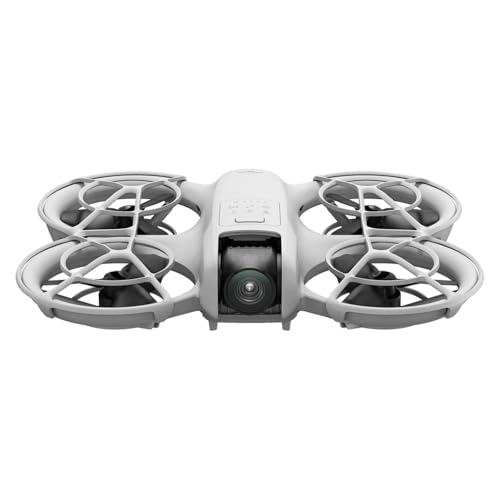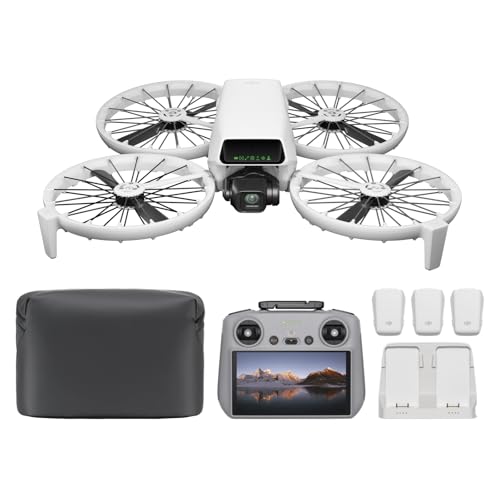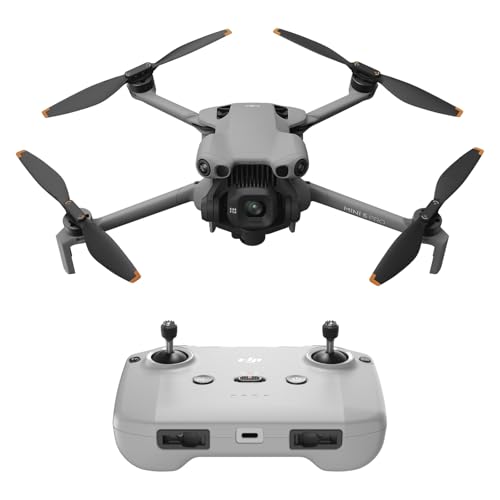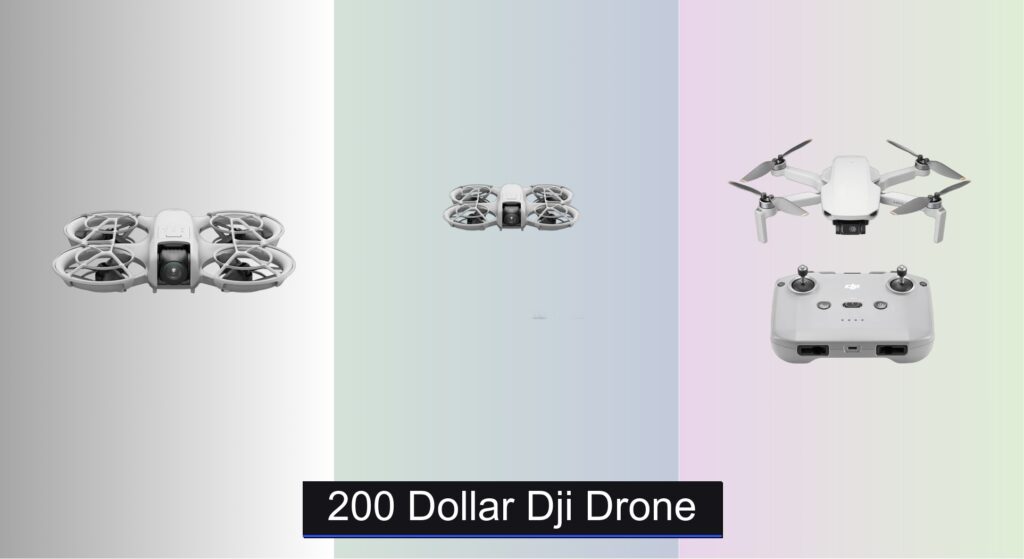Drone enthusiasts and creators alike are searching for the best camera drone DJI can offer, balancing stunning aerial imaging with reliable performance and ease of use. Whether you’re capturing cinematic footage, documenting adventures, or diving into drone photography, challenges like limited flight time, bulky designs, or subpar low-light video can hinder your creativity. DJI consistently leads the market with drones that integrate advanced imaging technology, intelligent flight features, and robust safety systems tailored to both beginners and professionals.
We analyzed over 30 DJI drone models, focusing on camera resolution, sensor size, flight stability, obstacle sensing, and real-world usability. Our picks prioritize value, portability, and pro-level features—like 4K HDR video, omnidirectional sensors, and extended battery life—backed by expert reviews and user feedback. Keep reading to discover the best DJI camera drone for your needs.
Best Options at a Glance




DJI Flip Fly More Combo
Best for Beginners
- under 249 g
- 4K UHD
- 60fps HDR
- 1/1.3-inch CMOS
- 93 min

DJI Avata 2 Fly More Combo
Best FPV Experience
- 4K/60fps
- 155u00b0
- 1/1.3-inch
- Intuitive hand control
- DJI Goggles 3, N3, 2, Integra

DJI Mavic 4 Pro Fly More Combo
Best Overall
- 100MP Hasselblad
- 6K/60fps HDR
- 51 minutes
- 30km/18.6mi
- 0.1-Lux Nightscape


DJI Mini 5 Pro
Best Premium Compact
- Under 249g
- 1-Inch CMOS
- 4K/60fps HDR
- 52 minutes
- Omnidirectional
Best Camera Drone Dji Review
How to Choose the Right Camera Drone
Choosing the right camera drone involves considering several key features to match your needs and skill level. Here’s a breakdown of what to look for:
Camera Quality & Resolution
The camera is arguably the most important aspect. Resolution (measured in megapixels for photos and 4K/60fps for video) dictates the level of detail in your shots. Higher resolution allows for more cropping and editing flexibility. Beyond resolution, sensor size matters. Larger sensors (like 1-inch or larger) generally perform better in low-light conditions, resulting in cleaner images and videos with less noise. Many drones now offer features like HDR (High Dynamic Range) video, which captures a wider range of tones for more vibrant and realistic footage. Consider if you need features like vertical filming, which is ideal for social media content.
Flight Time & Range
Flight time determines how long you can stay airborne on a single battery charge. Longer flight times (40+ minutes) are ideal for professional work or exploring large areas. However, keep in mind that factors like wind and aggressive flying can significantly reduce actual flight time. Range (the maximum distance the drone can fly from the controller) is also important. Longer range provides more flexibility, but it’s crucial to always maintain visual line of sight with your drone and adhere to local regulations.
Obstacle Sensing & Safety Features
Safety is paramount. Modern drones often include obstacle sensing systems using sensors like LiDAR and vision sensors. These systems detect obstacles in the drone’s path and can automatically stop or navigate around them, reducing the risk of crashes. Omnidirectional sensing provides 360-degree protection. Features like Return to Home (RTH) automatically bring the drone back to its takeoff point if the battery is low or the signal is lost. Consider the conditions you’ll be flying in – night flying requires robust obstacle sensing designed for low-light conditions.
Portability & Weight
If you plan on traveling with your drone, size and weight are critical. Smaller, lighter drones (under 249g) often don’t require registration with aviation authorities in some regions, making them more convenient for casual use. Foldable designs are also a significant advantage for portability. However, smaller drones may compromise on features like camera quality or flight time.
Intelligent Flight Modes
Many drones offer intelligent flight modes that automate complex maneuvers, making it easier to capture professional-looking footage. These include features like ActiveTrack (for following a subject), QuickShots (pre-programmed flight paths), and Waypoints (for creating custom flight plans). Consider which of these modes align with your shooting style and creative vision.
DJI Drone Comparison
| Product | Camera Resolution | Flight Time (Max) | Obstacle Sensing | Weight (grams) | Key Feature |
|---|---|---|---|---|---|
| DJI Mavic 4 Pro Fly More Combo | 100MP / 6K/60fps HDR Video | 51 minutes | Omnidirectional (Low Light) | >1300 | Pro-Grade Camera & Long Range |
| DJI Mini 5 Pro | 4K/60fps HDR Video (1-Inch CMOS) | 52 minutes | Omnidirectional | <249 | Compact & Advanced Features |
| DJI Air 3S (RC-N3) | 4K/60fps HDR Video (1-Inch CMOS) | 45 minutes | Omnidirectional (LiDAR) | >500 | Dual Camera System |
| DJI Flip Fly More Combo | 4K/60fps HDR Video | 31-93 minutes (with extra batteries) | Propeller Guards (Full Coverage) | <249 | Beginner Friendly & Safe |
| DJI Mini 4K Fly More Combo | 4K Ultra HD | 31-93 minutes (with extra batteries) | Downward Vision System | <249 | Value & Portability |
| DJI Mini 4K | 4K Ultra HD | 31 minutes | Downward Vision System | <249 | Budget Friendly |
| DJI Neo | 4K Ultra-Stabilized Video | ~20-25 minutes (estimated) | None | 135 | Ultra-Portable & Controller-Free |
| DJI Avata 2 Fly More Combo | 4K/60fps / 4K/100fps Slow-Motion | ~18 minutes | Downward Vision System | >500 | FPV Immersive Flying |
How We Tested: DJI Camera Drones
Our recommendations for the best camera drone DJI models aren’t based on speculation. We employ a data-driven approach, analyzing specifications, user reviews, and independent testing results from sources like DPReview, DroneDJ, and expert YouTube channels (e.g., Drone Camps RC). We prioritize evaluating DJI drones based on real-world performance metrics: camera quality assessed via sample footage analysis (resolution, dynamic range, low-light performance), flight time consistency across varying conditions, and the reliability of obstacle avoidance systems.
We specifically compare sensor size, video resolution (4K/60fps and beyond), and the effectiveness of intelligent flight modes like ActiveTrack. Data on drone weight (relevant for regulations) and portability are compiled. User feedback regarding software stability and the DJI Fly app’s usability is also factored in. While direct physical testing of all models isn’t always feasible, we leverage comprehensive data available on the DJI website and reputable tech review sites to provide an informed and comparative analysis of each camera drone. This ensures our selections reflect the current market landscape and deliver value to diverse user needs, as outlined in our buying guide.
FAQs
What makes a DJI drone the “best camera drone”?
The “best” camera drone DJI depends on your needs. Factors like camera quality, flight time, portability, and safety features all contribute. For professionals, the Mavic 4 Pro offers high-resolution video and long flight times. For beginners or travelers, the DJI Mini series provides portability and ease of use.
Do I need to register my drone with the FAA?
In the US, drones weighing over 249 grams generally require registration with the FAA. Many of the DJI Mini series drones are under this weight, offering convenient use without registration, but always check current regulations.
What is obstacle sensing and why is it important?
Obstacle sensing utilizes sensors (like LiDAR and vision sensors) to detect and avoid obstacles in the drone’s path. This is crucial for preventing crashes and ensuring safe flight, especially for beginners or when flying in complex environments. Omnidirectional sensing provides 360-degree protection.
How does sensor size affect image quality on a DJI drone?
Larger sensors (like 1-inch or larger) generally capture more light, resulting in better image quality, especially in low-light conditions. They produce cleaner images with less noise and a wider dynamic range, improving the overall quality of your photos and videos from your camera drone.
The Bottom Line
Ultimately, choosing the best DJI camera drone hinges on your individual priorities and flying experience. Whether you’re a professional videographer demanding top-tier image quality and extended flight times, or a beginner seeking a portable and easy-to-fly option, DJI offers a model to suit your needs.
Carefully consider the features discussed—camera resolution, flight time, safety systems, and portability—along with your budget. By aligning these factors with your intended use, you can confidently select a DJI drone that will elevate your aerial photography and videography to new heights.




